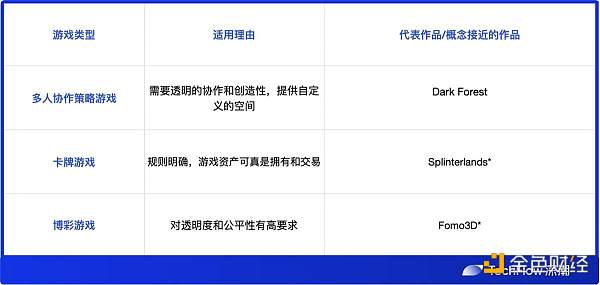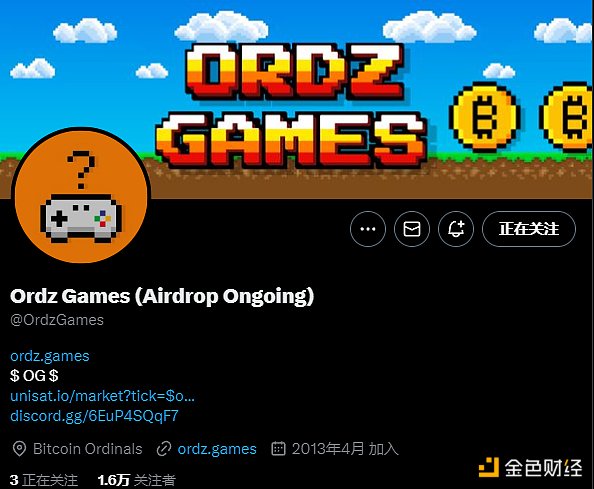Comprehensive overview of the gaming industry: Pie in the sky or an oasis in the desert
Overview of gaming industry: A dream or a profitable market?Author: David
In the world of cryptocurrency, GameFi is going through a downturn, and people’s attention to it has decreased. However, the concept of full-chain gaming has recently begun to attract more attention and discussion, seemingly bringing a new lease of life.
Full-chain gaming is a game form closely integrated with blockchain technology. Does its emergence mean it can become a new oasis in the desert?
This article will analyze the technical characteristics, use cases, current difficulties, and future prospects of full-chain gaming in depth, and reveal its potential, possibilities, and its impact on the gaming industry and players.
- Mint Ventures Talks with Pendle CEO: Seizing Hotspots to Build Breakthrough Products
- Web3 Social: DID First, DAPP Second
- Understanding Rare Con is just one article: what other expandable gameplay is there?
Full-chain and “semi” chain
A clear definition is important before anything else.
When I heard the name “full-chain gaming,” my first reaction was, “What is ‘semi’ chain gaming?” Or how is it different from how games used to interact with blockchain?
With this in mind, we can make a distinction:
-
Off-chain games:
Refers to traditional off-chain games. It means that the core logic, rules, and interaction process of the game are executed entirely on the game company’s server, and the game assets and virtual items owned by players only exist in the centralized server’s database. In this model, the game company has absolute control and data ownership.
-
Semi-chain games:
Early blockchain games solved the problem of virtual item ownership in traditional games by recording ownership of game assets and virtual items on the blockchain. However, the core logic and interaction process of the game are still centralized and require centralized servers for operation and processing.
-
Full-chain games:
A new game form that combines blockchain technology and decentralization. In full-chain games, the core logic, rules, and interaction process of the game are executed entirely on the blockchain, using smart contracts to execute and verify game rules. At the same time, game assets and virtual items also exist in the form of blockchain, and players can directly own, trade, and transfer these assets without relying on the game company’s centralized server.
A simple comparison of the three is as follows:

The differences between the three lie in their core logic, asset ownership, operability, data security, and decentralization. Full-chain games achieve true decentralization by recording both the core logic and assets on the blockchain, providing players with greater autonomy and security.
(Note: The issue of whether game art resources are stored on the chain is not considered here. Generally, such resources are not stored on the chain, or are resolved through decentralized storage.)
Auxiliary puzzle of full-chain games
Is it that simple to run when the logic and assets are on the chain? Although full-chain games store the logic and assets of the game on the blockchain, some auxiliary technical stacks and tools are still needed to provide complete functionality and experience for the game to truly run.
The reason for the need for auxiliary tools is that the blockchain itself, as a state machine with limited performance or valuable resources on the chain, is difficult to handle redundant call requirements in high-frequency interactive scenarios such as games.
At ETHDenver held a few months ago, developer William Robinson deeply summarized some other auxiliary tools that full-chain games may still need, which can be roughly divided into the following directions.

Ephemeral chain: The ephemeral chain is an important part of full-chain games. It is a temporary blockchain specifically designed to handle transient data and calculations in games. By using the ephemeral chain, full-chain games can achieve fast transaction confirmation and instant status updates, providing a smoother gaming experience.
After these calculations are completed, the ephemeral chain will disappear.
App-specific precompile: An intelligent contract pre-compiler designed for specific application scenarios. In full-chain games, application-specific pre-compiles can provide specific functions and computing capabilities to speed up game logic execution and reduce transaction costs. It brings higher scalability and efficiency to full-chain games.
This is very similar to the “preloading” principle in traditional games, which simply means preparing resources in advance and reading them when needed.
Battle rollup: A technical mechanism used to simplify the battle process in a full-chain game. By batch processing and summarizing the battle behavior between players into one block, the battle rollup can reduce the number and cost of transactions, and improve the performance and playability of the game. My understanding is that if you consider an example: “He took two steps forward, three steps back, four steps to the left, and knocked down Tom.” Perhaps we can summarize the total result of several player movements into a block instead of recording each step.
Although this does not achieve the true meaning of full-chain, just like L2’s rollup does not completely achieve “full-chain.”
Engine for On-Chain Games: The full-chain game engine is a tool specially developed for the development of full-chain games. It provides a set of development frameworks and tools to help developers build game logic and interactive functions on the blockchain. The full-chain game engine simplifies the development process, provides a rich library of features and tools, and enables developers to create full-chain games more efficiently.
Regarding this point, some developers have already tried, such as the MUD chain game development engine shared by developers at the Ethereum DEVCON conference.

Synchronization: In a full-chain game, the synchronization mechanism is an important mechanism to ensure the consistency of player operations and status. In traditional games, the front-end and server achieve synchronization through collaborative mechanisms. In full-chain games, synchronization mechanisms need to rely on blockchain and smart contracts to ensure the synchronization of player operations and status, and ensure the fairness and credibility of the game.
The following table can help you better understand some of the tools and mechanisms that full-chain games need to be matched with.

Is it worth playing a game with so much effort?
“I just played for fun. Is it necessary to make the game like this?” –There is obviously a certain contradiction between the player’s perspective and the encrypted narrative.
Full-chain games provide freedom, control, and composability. Players can own and control their own game assets, no longer limited by centralized game platforms, and create unique gaming experiences.
At the same time, it can generate financial benefits and economic value more fairly. The rules and behaviors are all on the chain, and everything depends on whether you are willing to work hard or not. This relatively fair model can also obtain economic returns through the game, which is obviously more suitable for non-player gold groups.
In addition, emphasizing narrative is far more important than the thing itself. The encrypted world has always advocated decentralization and anti-authority. Making a game that is not controlled by the game developer is more like a spiritual banner. Moreover, in full-chain games, you can participate in creating the narrative of the game and jointly build the world view and story plot of the game, which looks good.
Currently, sacrificing convenience, fluency, and entertainment, and exchanging for absolute fairness and control. This concept is not understandable and acceptable to everyone.
To better understand the applicability of full-chain games, we can summarize their advantages and disadvantages and audience in the following table:

In addition, in certain types of games, the application of full-chain games is more necessary. This is often determined by the rules and characteristics of the game itself:

Note: * indicates that it is not fully chained, and some logic is still off-chain, but it has certain similarities.
We even saw another type of full-chain game in the recent BRC-20 craze: by using H5 mini-games, game files are directly moved to the BTC chain, engraved on the blockchain through inscriptions, and you can go to play after visiting the relevant webpage.

This is more like a “disposable” full-chain, and players’ actions do not need to interact with the chain again. A typical example is @OrdzGames. The game itself is a small level, and it is also suitable for the characteristics of small-capacity games when relaxing.

Future
In the future, full-chain games may be combined with account abstraction and other technologies, such as batch transaction processing, signing, and delegated signature capabilities. This means that some routine operations in the game, such as the next 20 steps in the game do not require signatures or can be simplified using delegated signatures. This integration will bring more efficient interaction and operation experience to the game.
Currently, full-chain games are more of a theoretical and conceptual exploration than a commercial driving force. Although it brings new business models and opportunities, there are still many interest-related issues that need to be addressed before it can be accepted by giants.
Full-chain games are more like a subversion that starts from the edge. The concept is beautiful and desirable, but it is not necessary. Its implementation requires overcoming many technical and business challenges and establishing its own position in the existing game industry.
However, for geeks and cyberpunks who are keen on innovation and pursue the spirit of decentralization, full-chain games may become a unique and wonderful oasis.
We will continue to update Blocking; if you have any questions or suggestions, please contact us!
Was this article helpful?
93 out of 132 found this helpful
Related articles
- Understanding Consensus Mechanism and 11 Popular Consensus Algorithms in One Article
- Summary of the 162nd Ethereum Execution Layer core developer meeting: The reasonable target time for the Cancun upgrade is October.
- Explaining Futures Contracts in Contango: Low and Predictable Costs
- How has Sui mainnet performed after being online for 3 weeks? A article interpreting its data and community sentiment.
- Analysis of the Characteristics, Development Status, and Prospects of Solana’s Three Major NFT Lending Protocols
- Data Analysis of Ordinals NFTs: Blue Chip Index (2023/5/25)
- Potential Black Swan? What will happen to BTC and ETH in the event of a US debt default?






